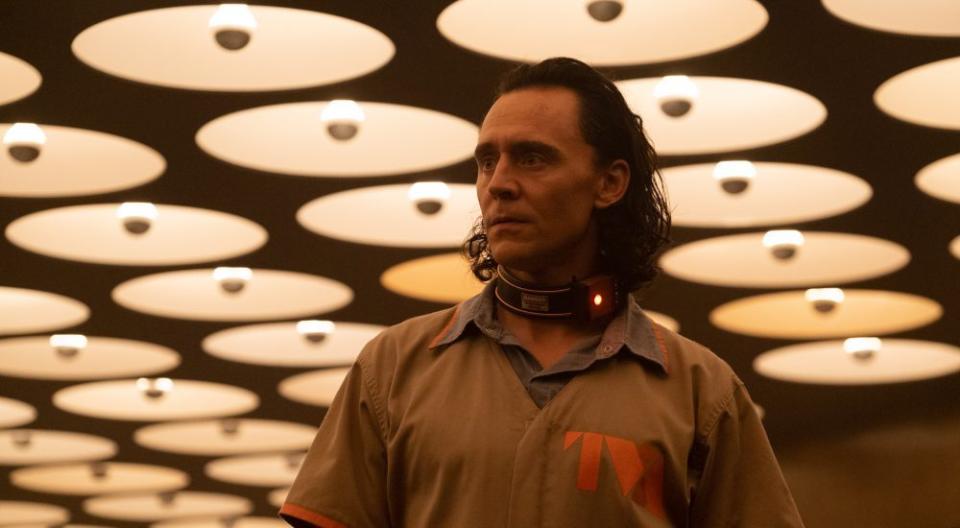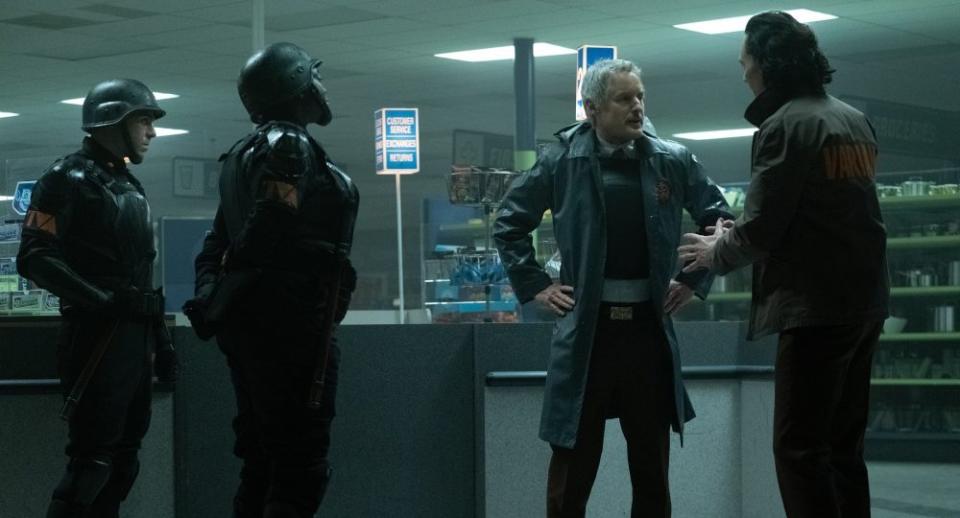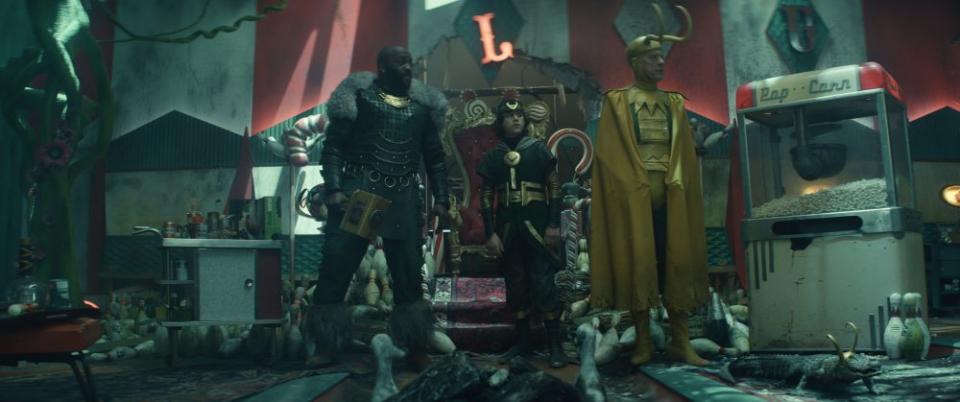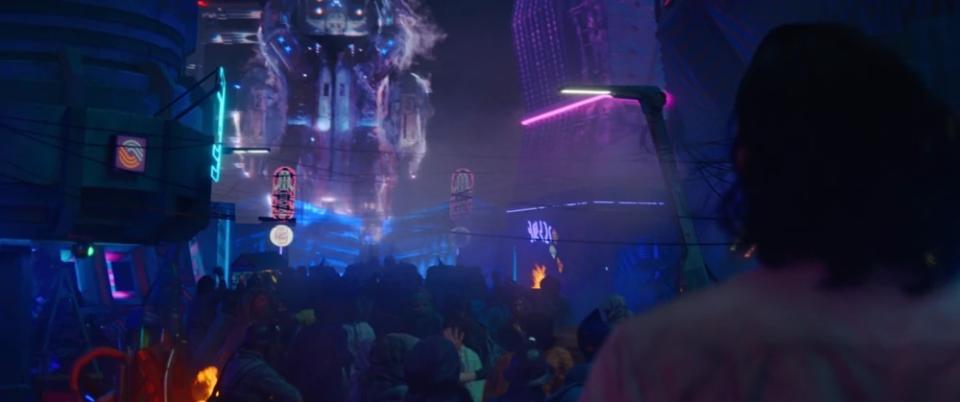How the Look of ‘Loki’ Was Influenced By ‘Mad Men’ and ‘Blade Runner’
- Oops!Something went wrong.Please try again later.
- Oops!Something went wrong.Please try again later.
- Oops!Something went wrong.Please try again later.
- Oops!Something went wrong.Please try again later.
- Oops!Something went wrong.Please try again later.

“Loki” creator Michael Waldron was concise with the world he wanted production designer Kasra Farahani to build, “’Mad Men’ meets ‘Blade Runner.’”
In addition to that, Farahani says, he and director Kate Herron were also inspired by the imposing bureaucratic world of Terry Gilliam’s “Brazil.” With that in mind, Farahani set out to bring the new realms for the God of Mischief to life. Almost all the sets were 360 builds, from the TVA (Time Variance Authority) to Sharoo.
More from Variety
Farahani breaks down how influences from film to mid-century architecture helped bring Loki’s world to life.
Building the TVA
Chuck Zlotnick
“In bringing that to life – reconciling mid-century modernism with analog, gritty ‘Blade Runner’ technology – I was thinking a lot about the differences between European mid-century modernism and Western mid-century modernism.
“The architecture is influenced a lot by brutalism and by Soviet-influenced modernism. The color palette and the materials and the whimsical patterning are very much inspired by that American style mid-century modernism, and creating this cognitive dissonance in the audience and characters going through the TVA so they can’t tell if this is a friendly space or a lethal one. It’s designed to keep both on their toes.
“We built a shocking amount of 360-degree sets, maybe more than I’ve done on any other project, including other Marvel projects. Pretty much everything in the TVA – except the archives, which was a location – everything else was a set, including the very elaborate ceilings.
“The monolithic nature of the set designs was very much integrated into these huge sculptural ceilings that have the lighting built into them. That was in concert with Autumn Durald’s style of cinematography where she routinely shoots these beautiful low-angle wide shots so we’re seeing these ceilings and everything else. It creates these beautiful graphic frames with dynamic shapes in almost every background.
“With the technology of the world, the idea is that analog technology never stopped and digital technology never happened. Analog technology continued to get more and more sophisticated. So, you have this high functionality of a holographic display that is manipulating time, but from a visual language standpoint, it has fuzziness, glitches and aberrations that are unique to analog. I think that’s what helps the anachronism and it helps us to feel like the TVA is a world that is built from cherry-picking technology across all the different and random timelines and worlds that the TVA comes across.”
Roxxcart Megastore
Chuck Zlotnick
“If the audiences pay attention to the TV displays they can see some funny, cheeky adverts that we came up with. “That store was about the future evolution of the megastore from a conglomerate. The store is part of the Roxxon corporation.
“Its strange graphic branding is something I call ‘German gas station branding,’ all the signage and logos have the font type and color combinations that you would see on gas stations on the side of the autobahn in Germany.
“We built that on location, but it was an empty store. We brought in our set decorating team who brought in an entire store worth of goods.
“Autumn and her electric team had to rig every single light in there that had to flicker.”
The Void
Courtesy of Marvel Studios
“Episode Five is like wall-to-wall Easter eggs. By virtue of being in the void, it has been deleted from time because it’s an aberration. You can see everything from the Thanos copter to the Polybius Video game machine that you see in the Loki lair.
“That was an Easter egg that Kevin R. Wright proposed. Everything there has a backstory. You can look at every artifact or ruin above ground, and there’s a backstory to it.
“Most of the stuff inside the bowling alley also has that same kind of backstory, but you need to look closely, and that was a fun set to build.
“It was another full 360 set and it had a lot of topographical changes. We imagined it as a fractured bowling alley with a slide element to it. All the lines there are visually drawing your eye to the throne which we imagined was an old Santa throne from a mall, pulled from a deleted reality.”
Building the Neon City – Sharoo
Disney Plus
“That was very challenging because you’re trying to create a new alien world in the MCU, which has done so many excellent alien worlds.
“We knew that while it felt alien, it also needed to feel gritty, industrial and working-class because it is a mining moon. It’s not a posh place.
“We came up with this idea of this blocky ziggurat (a design originated in ancient Mesopotamia) language as if the buildings were all 3D printed out of concrete.
“Each building had this labyrinth strike pattern on it that was made out of blacklight paint. When we turned on the black lights, parts of the building seem to flow. It looked almost like it was a visual effect or a 2D cartoon but it was entirely in camera, and it gave this world a new look.
“It’s something I’m proud of, and one of the three days we were shooting there was the day Kevin Feige was on set for a visit and he thought it was something so distinct in the MCU.”
Best of Variety
Sign up for Variety’s Newsletter. For the latest news, follow us on Facebook, Twitter, and Instagram.





